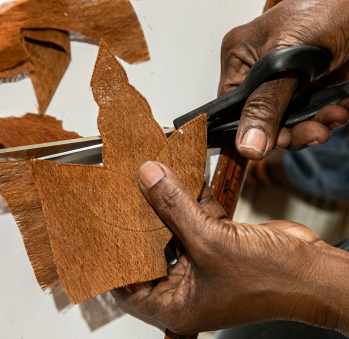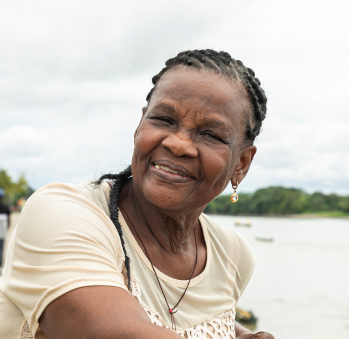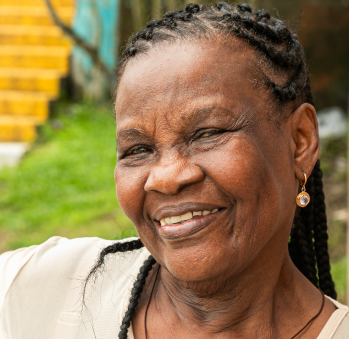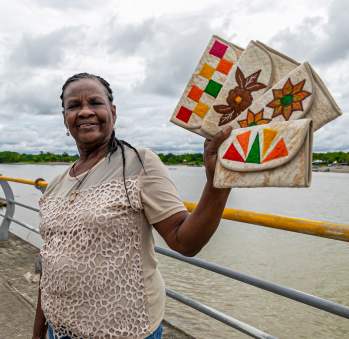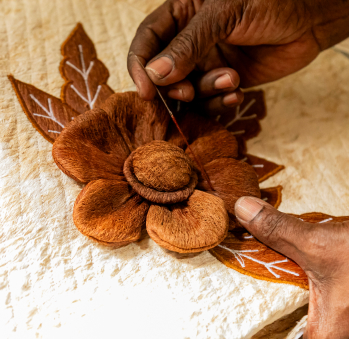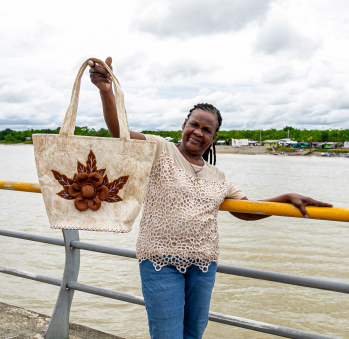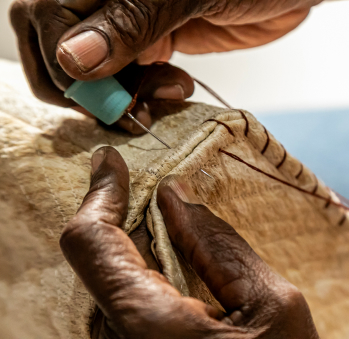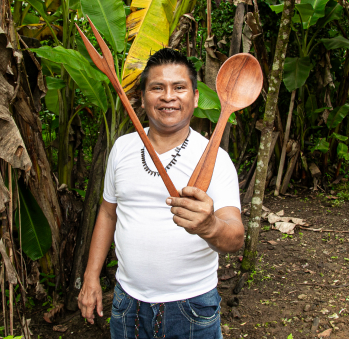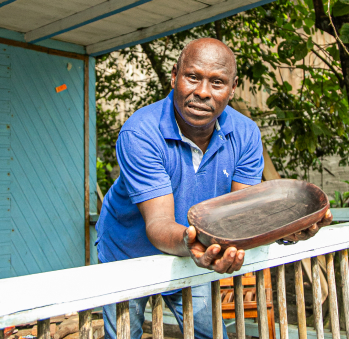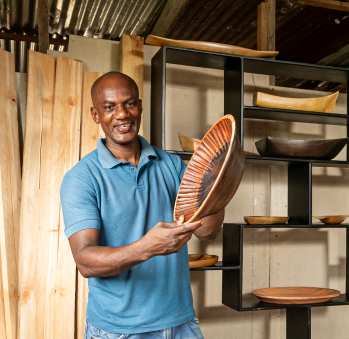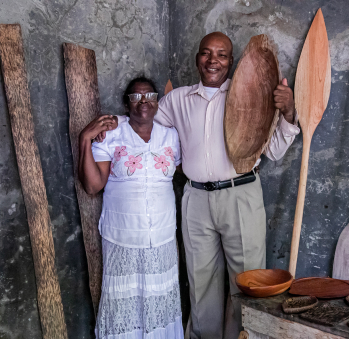Géminis Sergia Audivet Camacho
Workshop: Artesanías Géminis
Craft: Tejidos no tejidos
Trail: Choco Route
Location: Quibdó, Chocó
SCHEDULE YOUR VISIT
Carrera 5 # 26-42 Barrio Alameda, Quibdó, Chocó
3116580513
geminisartesanias@hotmail.com
Géminis was raised by her grandmother and aunts in Quibdó. They were all skilled weavers and embroiderers, and from a young age, she absorbed their expertise simply by watching them. Later, while attending school, she delved deeper into the world of dressmaking, crochet, two and five needle knitting, and the craft of making stuffed animals. These experiences allowed her to refine her skills and start taking orders to support her first child. Born in Novita, Chocó, she moved with her father to the department’s capital at the age of four. She fondly recalls her childhood, observing her father prepare for the San Francisco de Asís band rehearsals where he played the clarinet and trombone. Art has been an integral part of her life ever since.
Despite always working with her hands, she initially didn’t consider it an artisanal trade. She viewed her work in dressmaking, embroidery tablecloths, and crocheted rugs as regional crafts rather than artisanal endeavors. Her entrance into the artisanal realm was actually prompted by her work with natural fibers. She received tutelage from Miss Sureya Eljure, “May she rest in peace”. This respected master was the one who introduced her to the beautiful craft of weaving damagua and cabecinegro fibers. Géminis recalls her with reverence, acknowledging her as the one who facilitated her introduction to this exquisite artistry. Initially an assistant, she soon became her right hand and eventual partner, establishing a loyal clientele. When her mentor departed the city, Géminis took charge of the orders and independently made a name for herself.
Géminis passionately speaks about these indigenous fibers unique to her region. Damagua originates from the bark of a tree native to the Pacific coast in Alto Baudó. The branches of this tree grow within the water, and after pounding them with a wooden mallet, a thin layer called cáscara falls off. Some branches yield an expansive 1.50 x 80cm fibrous area. This fabric is washed and dried before being utilized to craft bags, table placemats, or even flowers if the fibers are robust enough. Although similar to yanchama, used by the Tikuna indigenous people in the Amazon for crafting animals and spiritual puppets, damagua here serves diverse crafting purposes. The botanical diversity intertwined with the customs of various groups of people is truly fascinating, showcasing the varied uses of a single fiber across the country.
Géminis then introduces us to the cabecinegro fiber sourced from the flowers of a palm that thrives in the muddy terrains of Alto Baudó. This fiber is strictly harvested during Holy Week, in April and May. She invites us to pause and marvel at its beauty, with its four or five bunches brimming with seeds. Traditionally, these orange vessels were employed by rural folk for carrying items, while their seeds were used by traditional healers for treating kidney diseases. You might have seen men wearing cone-like hats similar to magician’s hats; these were made from cabecinegro.
Utilizing both fibers, Géminis explores their design potential. She takes pride in applying her extensive knowledge of needlework, creating damagua dresses for beauty pageants and fashioning hats, bags, and lamps. She revels in receiving challenging orders, never hesitating to accept them, and most of the time, excelling in finding innovative solutions. With 52 years of working with her hands, she remains open to learning something new, always ready to be surprised by fresh discoveries.
Craft
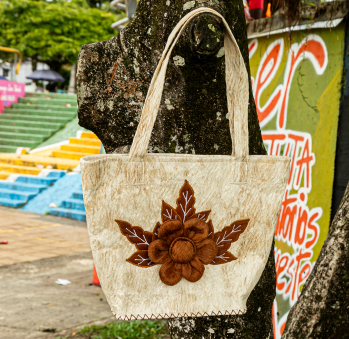
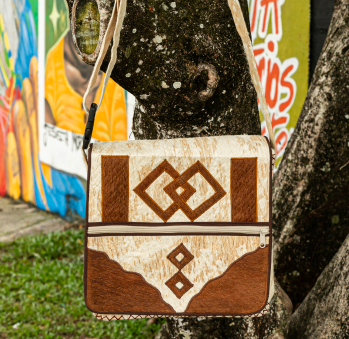


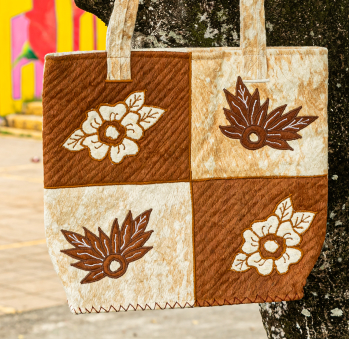
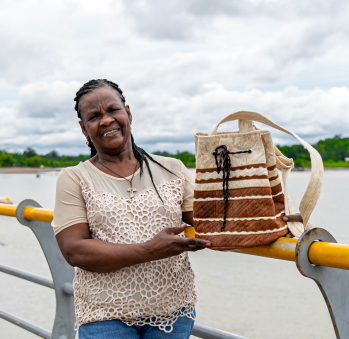
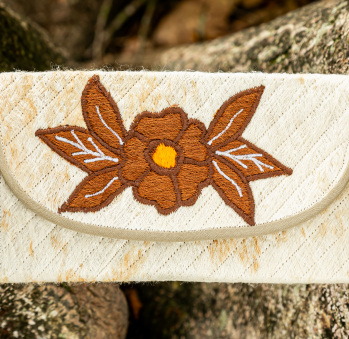
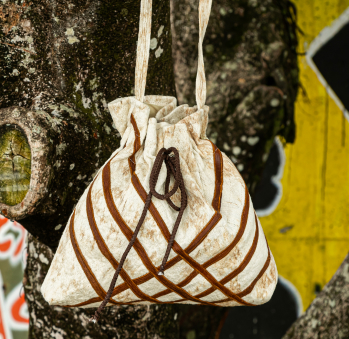
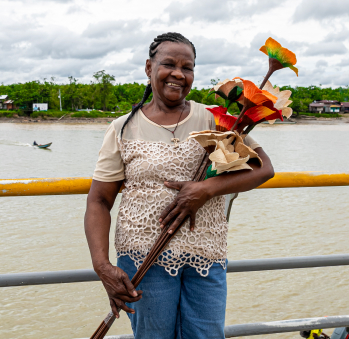









Artisans along the way
Artisans along the way
No puede copiar contenido de esta página








































